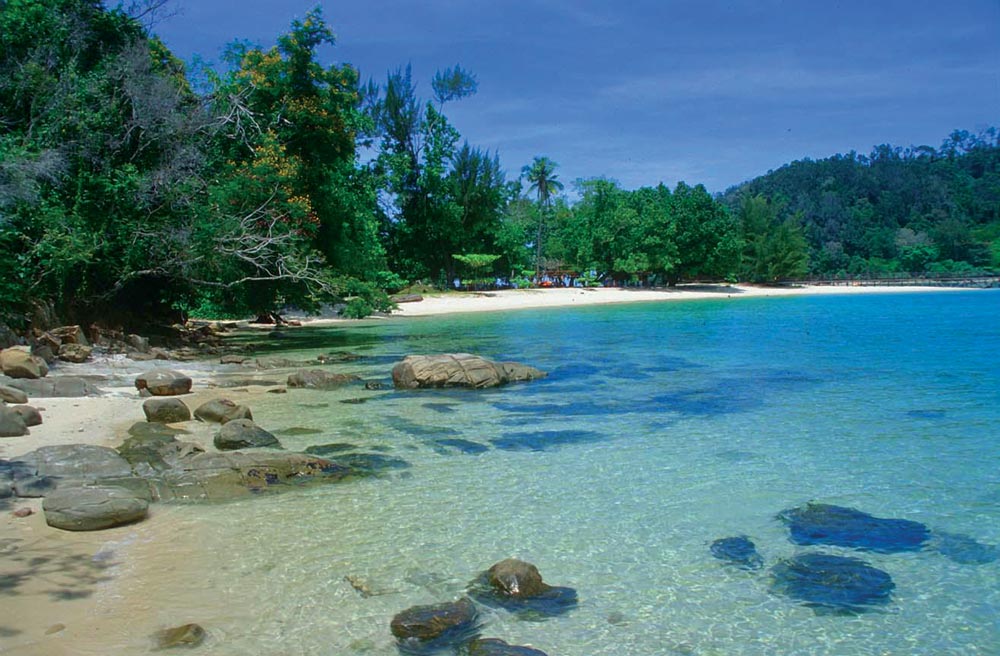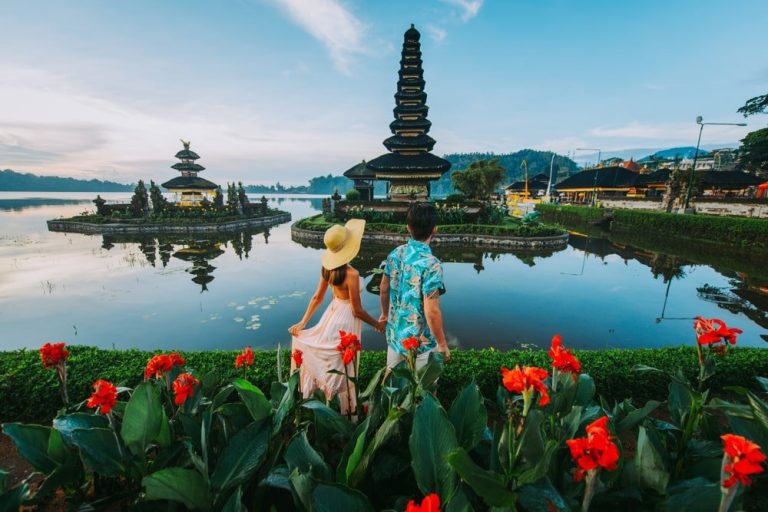Tunku Abdul Rahman Marine Park is a picturesque paradise in Malaysia, offering pristine waters, rich marine life, and lush tropical islands. Situated off the coast of Kota Kinabalu, this protected park covers five small islands: Gaya, Manukan, Mamutik, Sapi, and Sulug. Each of these islands offers unique experiences, from secluded beaches to underwater marvels. While the park is a well-known tourist destination, there are many hidden gems waiting to be discovered by adventurous travelers. In this guide, we’ll explore 10 must-visit hidden gems in Tunku Abdul Rahman Marine Park that will make your trip truly unforgettable.
Tunku Abdul Rahman Marine Park: Pulau Sulug’s Secluded Beaches
Pulau Sulug is the least developed and the least visited of the five islands in Tunku Abdul Rahman Marine Park, making it the perfect destination for those looking to escape the crowds. The island’s secluded beaches are ideal for a quiet retreat, where you can relax in peace surrounded by natural beauty. The clear, turquoise waters are perfect for a calming swim, and the soft, white sand provides an excellent spot for a picnic or sunbathing. Since it’s more remote, Sulug offers an untouched and wild atmosphere that contrasts with the more commercialized islands.
How to Get There: You can arrange a private boat ride from Kota Kinabalu or join a less frequent public boat tour to Sulug. Be prepared to bring your own food and water, as there are no facilities on the island.
Tunku Abdul Rahman Marine Park: Gaya Island’s Hidden Jungle Trails
Gaya Island is the largest of the five islands and is home to several resorts and more developed facilities. However, beyond its popular beaches, Gaya Island is also known for its lush tropical rainforest, which hides a network of trails perfect for adventurous hikers. The trails vary in difficulty, with some leading to stunning viewpoints overlooking the surrounding islands and the South China Sea. As you trek through the dense jungle, keep an eye out for exotic wildlife such as macaques, hornbills, and even the elusive proboscis monkey.
Top Trail: The Gaya Island trek from Malohom Bay to Police Beach offers an excellent mix of jungle and coastal views, with opportunities for wildlife spotting along the way.
The Coral Gardens of Manukan Island
While Manukan Island is popular among day-trippers, many visitors miss the island’s hidden coral gardens located slightly further from the main beach. If you’re willing to snorkel a little farther out, you’ll find vibrant coral reefs teeming with life. The coral gardens are home to a variety of marine species, including clownfish, parrotfish, and butterflyfish. This underwater haven is less crowded than the island’s main snorkeling spots, giving you a more intimate and tranquil experience with the marine life.
Snorkeling Tip: Bring your own snorkeling gear or rent it at the park entrance. Early morning snorkels are recommended for calm waters and better visibility.
Sapi Island’s Secret Lagoon
Sapi Island is a favorite for water sports, including parasailing and banana boat rides. However, few visitors venture beyond the main beach to discover the island’s hidden lagoon. Located on the far side of the island, this small, serene lagoon is surrounded by mangroves and rocks, creating a natural, secluded swimming spot. The calm waters make it an excellent place for relaxing or floating in the shallows.
How to Find It: To reach the lagoon, follow the short trail behind the main beach and be prepared for a bit of a climb over some rocky areas.
Mamutik Island’s Dive Sites
Mamutik Island may be the smallest island in the marine park, but it boasts some of the best diving opportunities. The island’s underwater landscape is home to thriving coral reefs, making it a hotspot for both beginner and experienced divers. One of the lesser-known dive sites around Mamutik Island is a sloping reef filled with soft corals, nudibranchs, and schools of colorful fish. On a good day, you might even spot a hawksbill turtle or a reef shark gliding through the waters.
Dive Tip: Mamutik Island offers diving lessons for beginners, so if you’re new to diving, this is a great place to start.
Gaya Island’s Mangrove Forests
Most visitors to Gaya Island stick to its beaches, but the island is also home to vast mangrove forests that provide essential habitat for many species. These mangroves are a hidden gem, offering a unique way to explore the island’s natural beauty. You can paddle through the waterways in a kayak, winding your way past the towering mangrove trees and spotting birds, crabs, and fish. The mangroves are also an important part of the local ecosystem, providing protection against erosion and serving as a nursery for marine life.
Best Time to Visit: High tide is the best time to explore the mangroves, as the water levels are higher and easier to navigate by kayak.
Sulug Island’s Snorkeling Adventure
While Pulau Sulug is mostly known for its peaceful beaches, it also offers excellent snorkeling opportunities. Because Sulug receives fewer visitors, its surrounding coral reefs are less disturbed, making it an ideal spot for snorkelers seeking a more pristine environment. The crystal-clear waters around the island are home to a wide variety of marine life, including vibrant coral species, anemones, and tropical fish. Snorkeling around Sulug is a peaceful experience, away from the crowds, where you can immerse yourself in the underwater world.
Pro Tip: Bring along your snorkeling gear, as the island lacks facilities, and be sure to keep an eye on the tides.
The Sunset Viewpoints of Manukan Island
Many visitors to Manukan Island come for the beaches and water sports, but one of the island’s best-kept secrets is its stunning sunset viewpoints. If you stay on the island until the late afternoon, you can hike to the island’s western side, where several secluded spots offer panoramic views of the sunset over the South China Sea. Watching the sunset from these lesser-known viewpoints is a magical experience, as the sky turns shades of pink, orange, and purple, creating a picture-perfect end to your day.
Where to Go: The best sunset spots are located along the hiking trails that lead away from the main beach and into the island’s more remote areas.
Sapi Island’s Night Snorkeling
While daytime snorkeling is common in Tunku Abdul Rahman Marine Park, few people are aware of the unique experience of night snorkeling. Sapi Island is one of the best places in the park to try this exciting activity. At night, the underwater world comes alive with nocturnal creatures, including lobsters, crabs, and bioluminescent plankton that light up the water. Night snorkeling offers a completely different perspective on the marine ecosystem and is an adventure not to be missed.
Safety Tip: Always go night snorkeling with a guide, as it requires special equipment like underwater torches and knowledge of the area.
Gaya Island’s Coral Nursery
Coral conservation is a critical issue in the Tunku Abdul Rahman Marine Park, and Gaya Island is home to a coral nursery dedicated to preserving and restoring coral reefs. The coral nursery is a hidden gem for those interested in marine conservation, as it offers a chance to learn about the efforts being made to protect the park’s underwater ecosystems. Visitors can join educational tours to learn how coral is cultivated and transplanted back into the ocean, playing a direct role in helping to restore damaged reefs.
How to Participate: Ask your tour operator or resort about coral nursery tours and how you can get involved in volunteer activities.
Conclusion
Tunku Abdul Rahman Marine Park is more than just a collection of beautiful islands—it’s a treasure trove of hidden gems waiting to be explored. From secluded beaches and coral gardens to jungle trails and underwater adventures, this marine park offers something for every type of traveler. Whether you’re an avid snorkeler, a hiking enthusiast, or simply seeking a peaceful escape, the park’s islands provide countless opportunities to discover the natural beauty and rich biodiversity of Sabah. So, on your next trip, venture beyond the usual tourist spots and uncover the secrets that make Tunku Abdul Rahman Marine Park a true paradise.
FAQs
1. How do I get to Tunku Abdul Rahman Marine Park?
You can reach the marine park by taking a short boat ride from Kota Kinabalu. Boats depart regularly from the Jesselton Point Ferry Terminal.
2. What activities are available in the park?
Activities in the park include snorkeling, scuba diving, hiking, kayaking, and wildlife watching. You can also enjoy beach relaxation and sunset viewing.
3. Is it possible to stay overnight on the islands?
Yes, there are a few resorts on Gaya Island where you can stay overnight. Most of the other islands are primarily for day trips.
4. What is the best time to visit Tunku Abdul Rahman Marine Park?
The best time to visit is during the dry season, which runs from March to October. The weather is typically sunny, and the sea conditions are calm during this period.
5. Do I need a permit to visit the marine park?
Yes, a conservation fee is required for visitors to the park. The fee helps support the conservation and maintenance of the park’s natural resources. The fee is usually included in your boat transfer ticket.
Also read: Zhangjiajie National Forest Park: 10 Essential Items to Pack for Your Visit




Leave a Comment